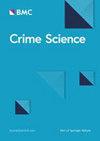识别具有共同特征的恐怖袭击分组以预防大规模伤亡袭击:一种数据挖掘方法
IF 3.1
Q1 CRIMINOLOGY & PENOLOGY
引用次数: 0
摘要
世界各地的安全和情报机构为防止恐怖袭击投入了大量资源,因为恐怖袭击可能造成战略破坏、国家士气低落、主权受到侵犯和政府不稳定。最近,数据挖掘技术得到了发展,可以从犯罪数据中识别出传统分析方法无法识别的模式和关联。本文旨在说明如何使用可解释的分类算法来识别具有共同特征并导致大规模死亡的恐怖事件子群("模式")。这种方法所产生的洞察力远远超过使用假设检验和回归模型的传统宏观研究。除了在方法论上的贡献之外,从实践的角度来看,探索 "模式 "中确定的特征还可以制定预防战略,如改变物理或系统环境。这符合情景犯罪预防(SCP)理论。我们将我们的方法应用于全球恐怖主义数据库(GTD)。我们列举了三个例子,在这些例子中,以特定模式(一组特征)描述的恐怖袭击造成大规模伤亡的概率很高,而仅在其中一个特征(即袭击月份、目标地理区域或袭击类型)上存在差异的袭击造成的伤亡人数要少得多。我们建议探索差异化特征,以此降低大规模伤亡恐怖事件的发生概率。本文章由计算机程序翻译,如有差异,请以英文原文为准。
Identification of subgroups of terror attacks with shared characteristics for the purpose of preventing mass-casualty attacks: a data-mining approach
Security and intelligence agencies around the world invest considerable resources in preventing terrorist attacks, as these may cause strategic damage, national demoralization, infringement of sovereignty, and government instability. Recently, data-mining techniques have evolved to allow identification of patterns and associations in criminal data that were not apparent using traditional analysis. The aim of this paper is to illustrate how to use interpretable classification algorithms to identify subgroups (“patterns”) of terrorist incidents that share common characteristics and that result in mass fatalities. This approach can produce insights far beyond those of conventional macro-level studies that use hypothesis-testing and regression models. In addition to this methodological contribution, from a practical perspective, exploring the characteristics identified in the “patterns” can lead to prevention strategies, such as alteration of the physical or systemic environment. This is in line with situational crime prevention (SCP) theory. We apply our methodology to the Global Terrorism Database (GTD). We present three examples in which terror attacks that are described by a particular pattern (set of characteristics) resulted in a high probability of mass casualties, while attacks that differ in just one of these characteristics (i.e., month of attack, geographical area targeted, or type of attack) resulted in far fewer casualties. We propose exploration of the differentiating characteristic as a means of reducing the probability of mass-fatality terrorist incidents.
求助全文
通过发布文献求助,成功后即可免费获取论文全文。
去求助
来源期刊

Crime Science
Social Sciences-Cultural Studies
CiteScore
11.90
自引率
8.20%
发文量
12
审稿时长
13 weeks
期刊介绍:
Crime Science is an international, interdisciplinary, peer-reviewed journal with an applied focus. The journal''s main focus is on research articles and systematic reviews that reflect the growing cooperation among a variety of fields, including environmental criminology, economics, engineering, geography, public health, psychology, statistics and urban planning, on improving the detection, prevention and understanding of crime and disorder. Crime Science will publish theoretical articles that are relevant to the field, for example, approaches that integrate theories from different disciplines. The goal of the journal is to broaden the scientific base for the understanding, analysis and control of crime and disorder. It is aimed at researchers, practitioners and policy-makers with an interest in crime reduction. It will also publish short contributions on timely topics including crime patterns, technological advances for detection and prevention, and analytical techniques, and on the crime reduction applications of research from a wide range of fields. Crime Science publishes research articles, systematic reviews, short contributions and theoretical articles. While Crime Science uses the APA reference style, the journal welcomes submissions using alternative reference styles on a case-by-case basis.
 求助内容:
求助内容: 应助结果提醒方式:
应助结果提醒方式:


